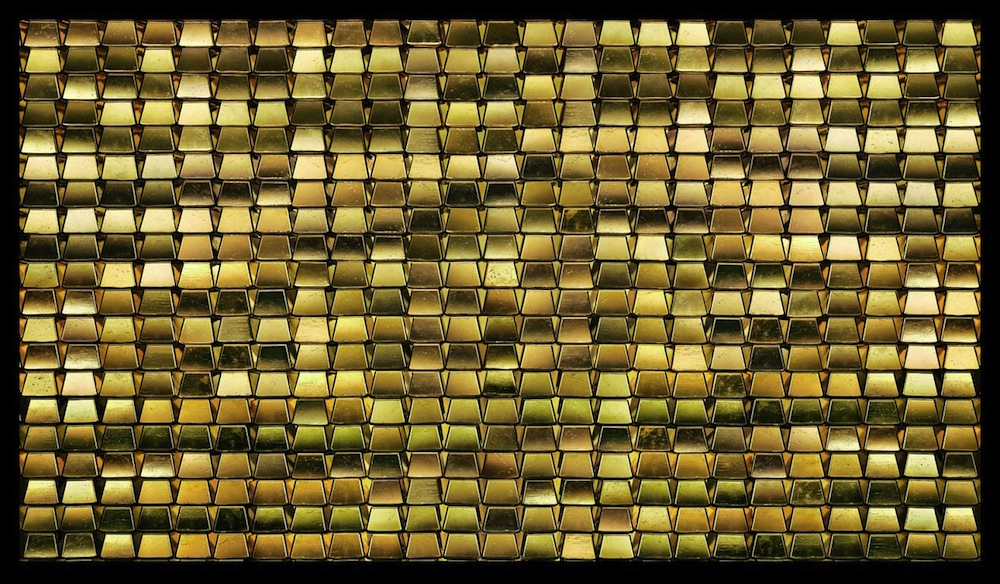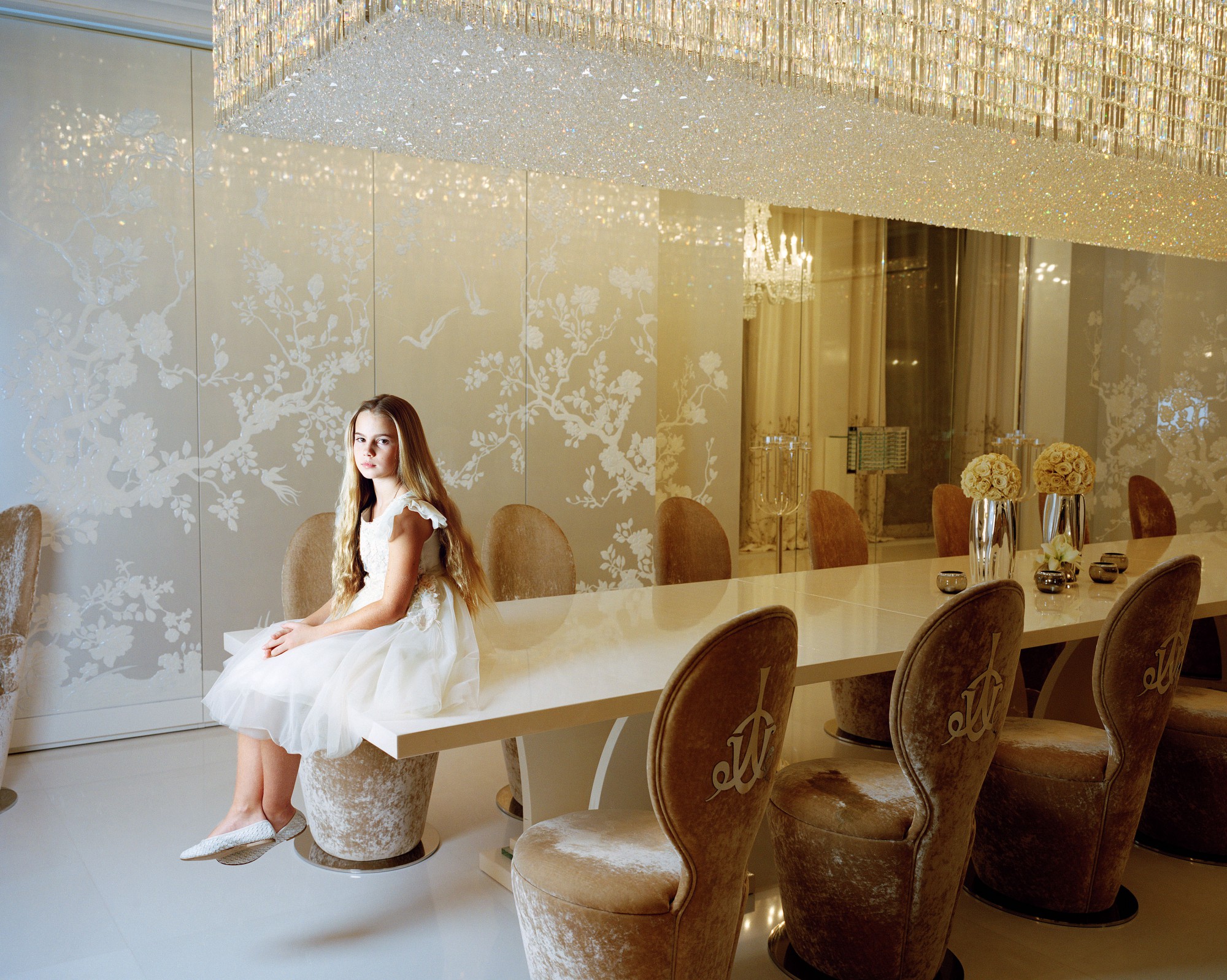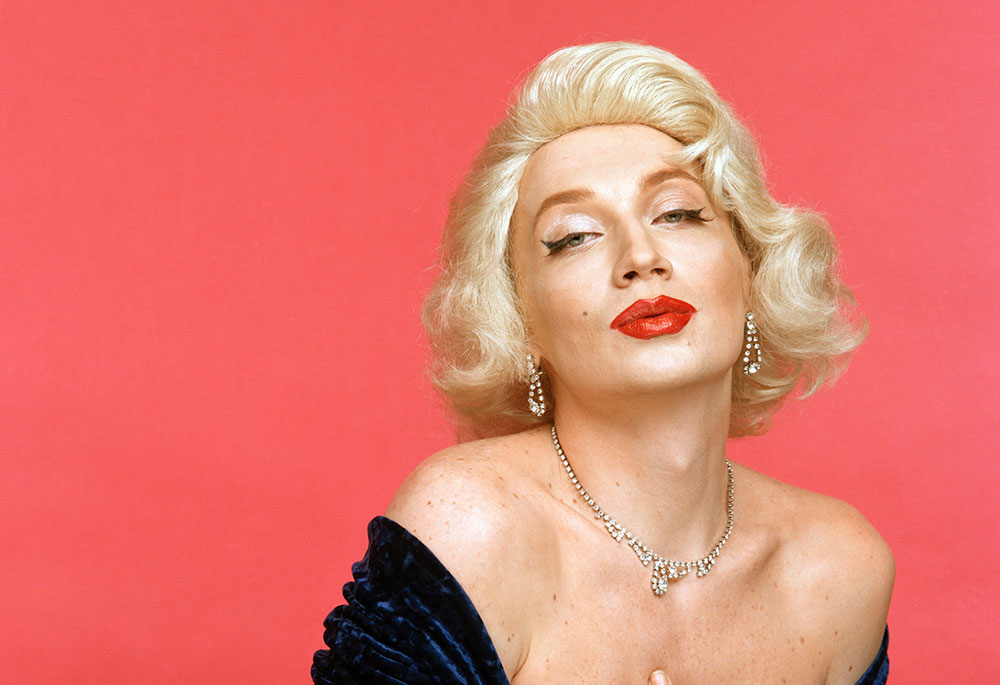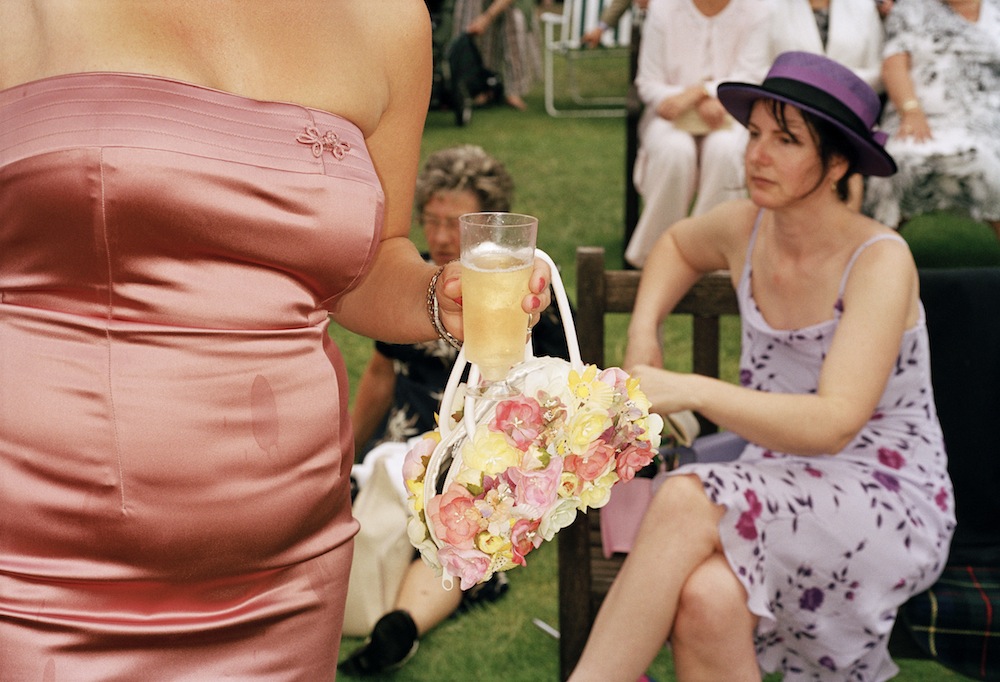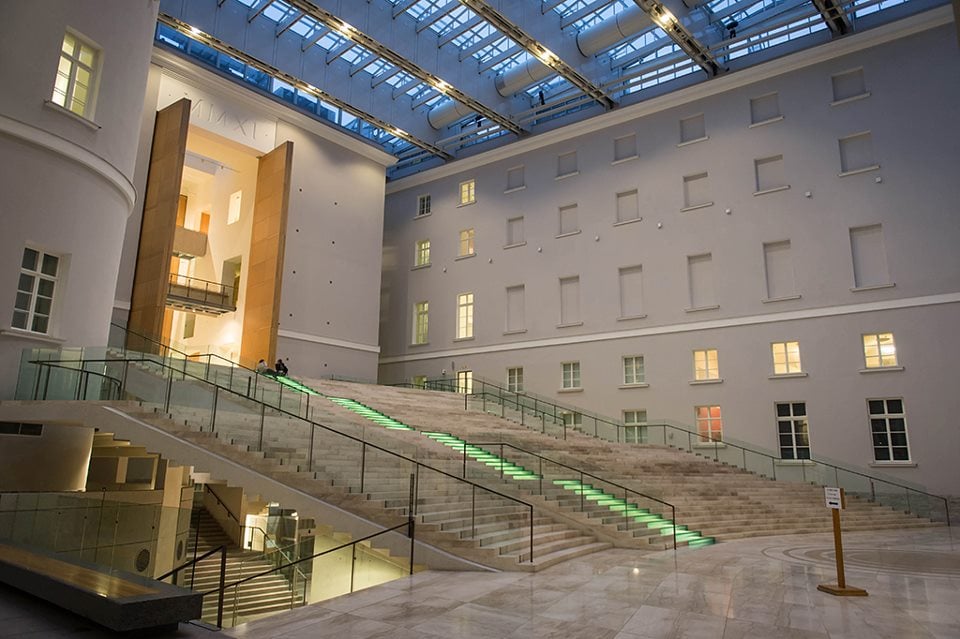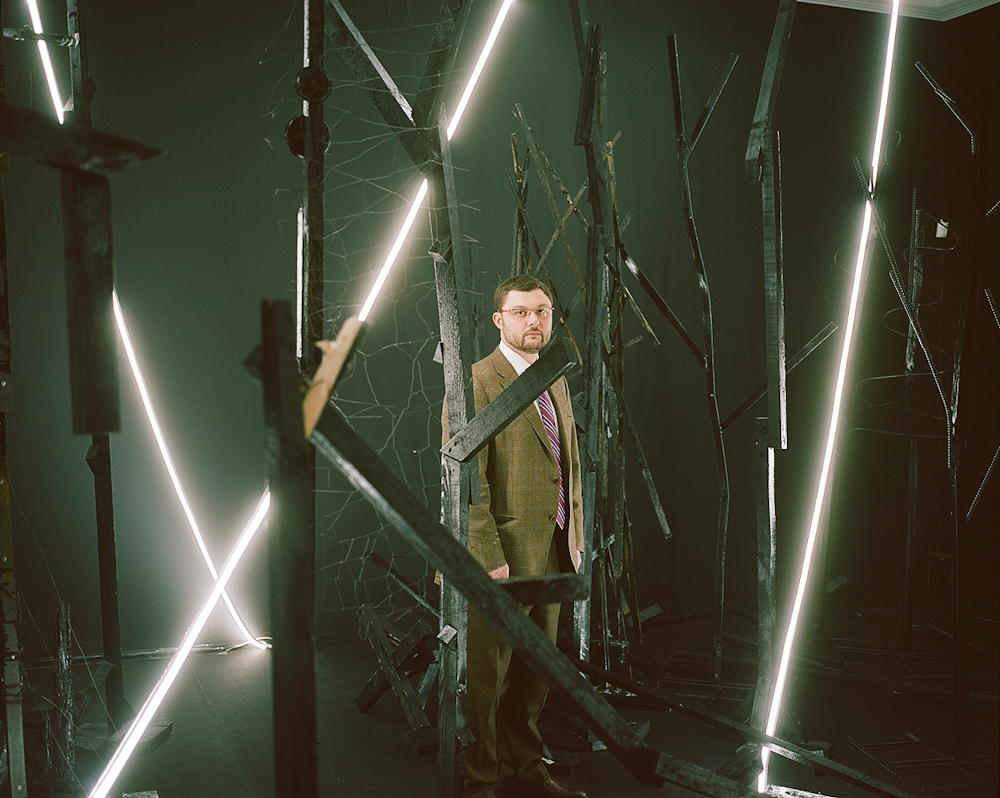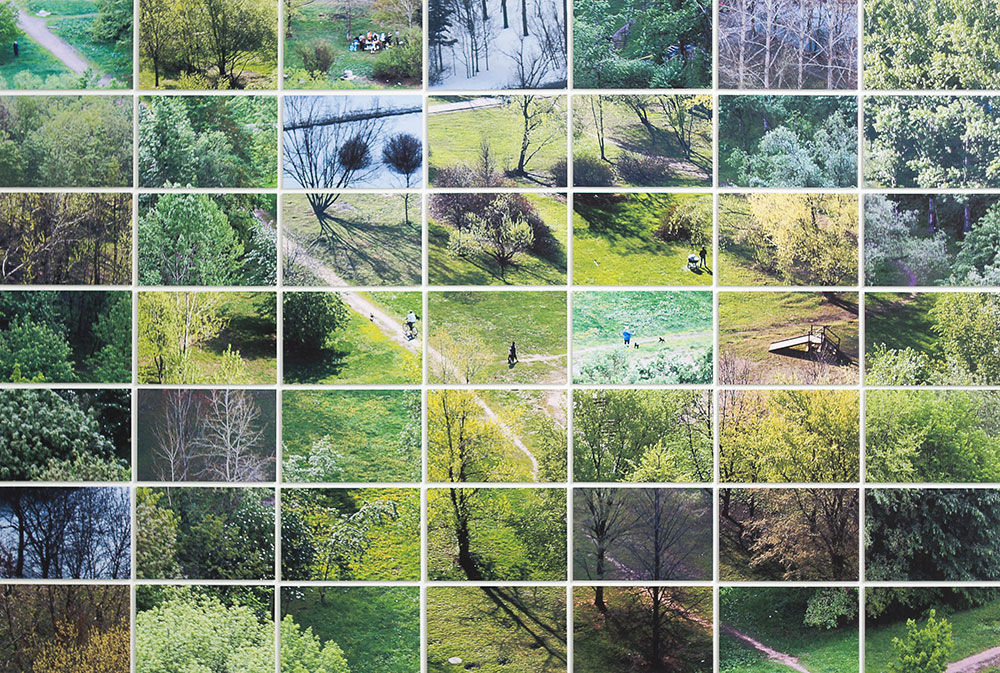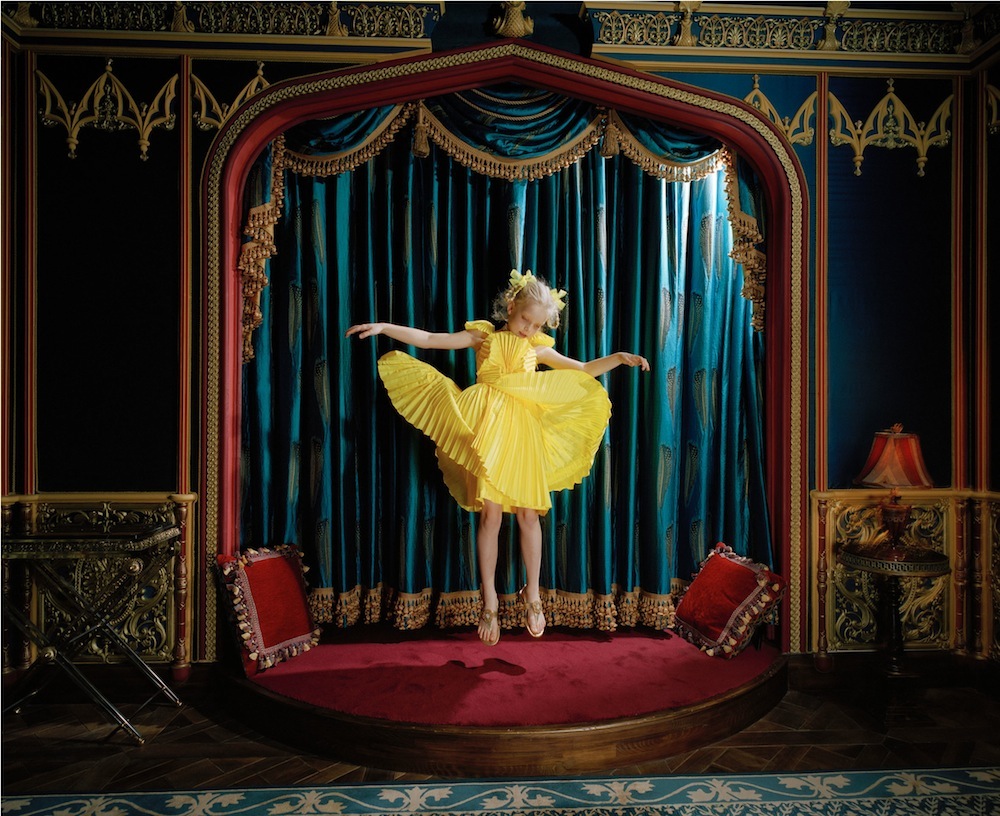Letter from: money, vengeful ghosts and the dream-like Venice Biennale
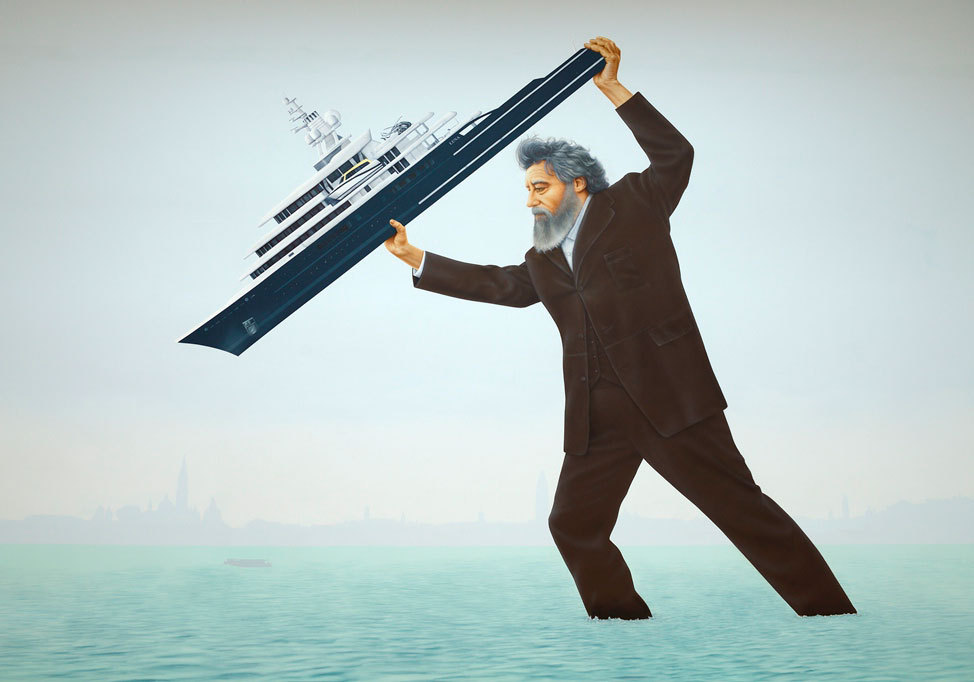
Showers of gold, beats by Afrika Bambaataa and the ghost of William Morris... Ekow Eshun visits the Venice Biennale
The Venice Biennale is often described as the art world equivalent of the Olympics. But a more accurate analogy is the opening ceremony’s parade of nations when athletes march through the stadium country after country. Even though the processing sportspeople know they should be on their best behaviour they can’t resist gurning at the TV cameras, leaping on each others shoulders or otherwise behaving with less dignity than Baron de Courbetin probably had in mind when he came up with that opening ritual.
So it is with Venice. The baldly nationalistic nature of the festival, with its competing pavilions from around the world — 88 this year — sits ill with artists who are, by and large, a contrarian breed, more comfortable sticking two fingers up to the enterprise than marching in line with it.
“Isolated from real life you drift from show to show through a city of hypnotic beauty”
Jeremy Deller described his show for the British pavilion as a “wistfully aggressive” reflection of his “love-hate relationship” with the country. The artists representing France and Germany swapped pavilions in an effort to escape the trappings of nation altogether. It’s partly through such tactics that the festival feels less like a competitive event and closer instead to a collaborative inquiry, an exploration of prevailing tropes in imagery and ideas.

Romanian Pavilion: enactment of Mariko Mori’s Wave - UFO exhibited in the biennale in 2005. Photograph: Edi Constantin
The overall theme of the 2013 biennale, as set by its director and curator Massimiliano Gioni, is The Encyclopedic Palace, a reference to a museum conceived by a self-taught Italian-American artist Marino Auriti in the Fifties. Auriti’s plan was to house all worldly knowledge in one building, bringing together the greatest discoveries of human civilisation, from the wheel to the satellite. Auriti’s concept was never realised and the keynote exhibition, curated by Gioni, is replete with other attempts, mostly doomed, to catalogue and quantify the known world. The result is something fabulous and strange; artworks that encompass the mystic, the inspired and the deranged. There are pages from Carl Jung’s Red Book and tarot cards drawn by the satanist Aleister Crowley. But there are also crazed faux-reality TV videos by US artist Ryan Trecartin, obscene adolescent scrawlings by Russia’s Evgenij Kozlov and a troupe of babbling performers set loose by Germany’s Tino Seghal to chant and sing and dance among the visiting crowds. Against the odds it all hangs together, a collective logic emerging from the multiple, individual moments of madness.
“Artists rarely address the gilded milieu in which they work yet occasionally you sense an unease, even an anger”
Yet, an unintended consequence of Gioni’s theme is that the Biennale, as a whole, takes on a dream-like quality. This is especially so for the four days of the professional preview, when the festival is an invite-only affair reserved for the art world. Isolated from real life you drift from show to show through a city of such hypnotic beauty that it seems to exist outside waking reality. The days become a sequence of sense impressions, the art on display jostling for attention with the physical environment.
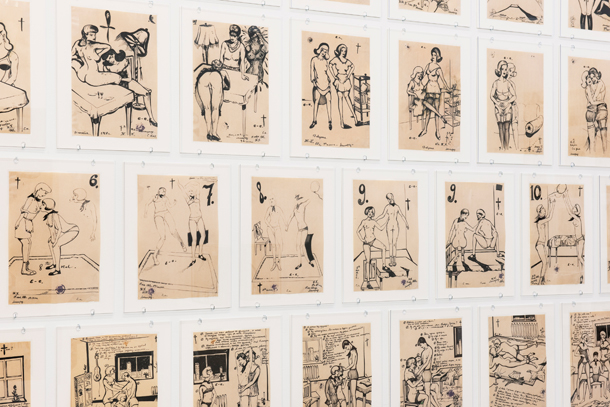
Evgenij Kozlov’s The Leningrad Album (1967–73)
At the Romanian pavilion, performers restage iconic works from previous biennales. In an empty room, and using nothing more than their own bodies, they act out Picasso’s Guernica, sculptures by Rodin, performances by Marina Abramović and Hans Haacke’s infamous destruction of the German pavilion’s floor in 1993. In the Rialto, the city’s fish market district, Afrika Bambaataa DJs at the party for American artist Sarah Sze. Huge of girth, he cuts and mixes in and out of Trans-Europe Express, as grave and immobile as an Easter Island statue.
In the courtyard of a naval academy, the Welsh artist Bedwyr Williams spins an absurdist tale, told from the perspective of a mole, tiny and short-sighted, setting forth on an epic journey across a suburban lawn. Williams wears a white cotton headpiece (“My mam made it for me,” he tells me later) and it lends him a druidic air, like a Celtic Joseph Beuys. He gestures into the air and swallows swoop down over the heads of the audience as if he’s conjured them out of the twilight sky.
“Rising from the waves, William Morris is wreaking terrible vengence on Roman Abramovich’s super-yacht, Luna”
Across the lagoon on the island of San Giorgio Maggiore, an 11-metre tall inflatable sculpture of Marc Quinn’s Alison Lapper Pregnant looks out over the water. At a more modest scale, a version of the statue in marble stood on the fourth plinth in Trafalgar Square, in pointed contrast to the generals on horseback around her. Blown up, the effect is less striking. Lapper looks forlorn and isolated. Dappled light from the seawater gives the rubbery surface of the sculpture an uneasy hue.
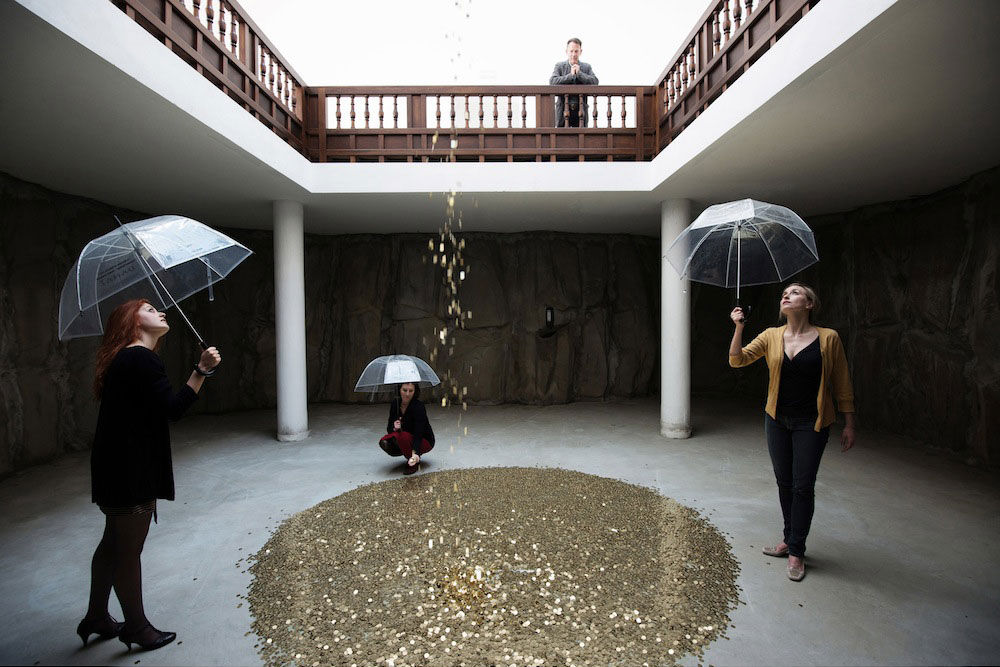
Inside the Russian Pavilion by Vadim Zhakarov (2013)
In these days of parties, palazzos and prosecco, the world beyond the sea feels impossibly distant. The immense yachts of collectors berthed beside the Giardini dominate the horizon. The talk is of which pavilion is throwing the best party and who has an invitation to a particularly lavish reception at the Hotel Bauer. Artists rarely address the gilded milieu in which they work yet occasionally you sense an unease, even an anger, at being caught in such a bubble of privilege and self-regard.
In the Russia pavilion, Vadim Zhakarov rains gold coins down on the heads of spectators. Zhakarov has brought to life the Greek myth of Zeus and Danae, crafting a cautionary mise-en-scène of sex and power that is itself hypnotic and vaguely seductive. Baz Lurhmann recently tried to distil the pleasures and perils of wealth and desire in The Great Gatsby. Zhakarov has taken on the same theme, and with a similarly bravura sensibility to Lurhmann’s; but where the former failed, he has succeeded thanks to a far more acute and pointed sensibility.
“In an environment in which value and price are so commonly elided Tino Seghal has conjured himself as a figure outside the rules of the market”
Conjured on an enormous wall painting, Jeremy Deller summons the ghost of the socialist artist and craftsman William Morris. Rising from the waves, Morris is wreaking terrible vengence on Roman Abramovich’s super-yacht, Luna, whose gargantuan form dominated the waterfront at the last biennale two years ago, to much public resentment.
And perhaps the judges too are worried about the influence of money on art. At the end of the preview period, it announced that the prize for best artist had gone to Tino Seghal, an artist dedicated to immateriality. His choreographed performances take place without documentation — no photos, no written instructions, no contracts — and afterwards, there is nothing that remains to be bought or sold. In an environment in which value and price are so commonly elided he has conjured himself as a non-commodifiable entity, a figure outside the rules of the market, an artist whose work, in its evanescence, is more dream than reality.


